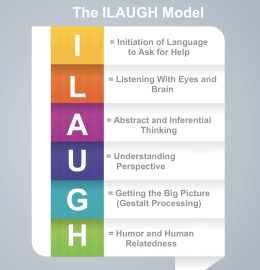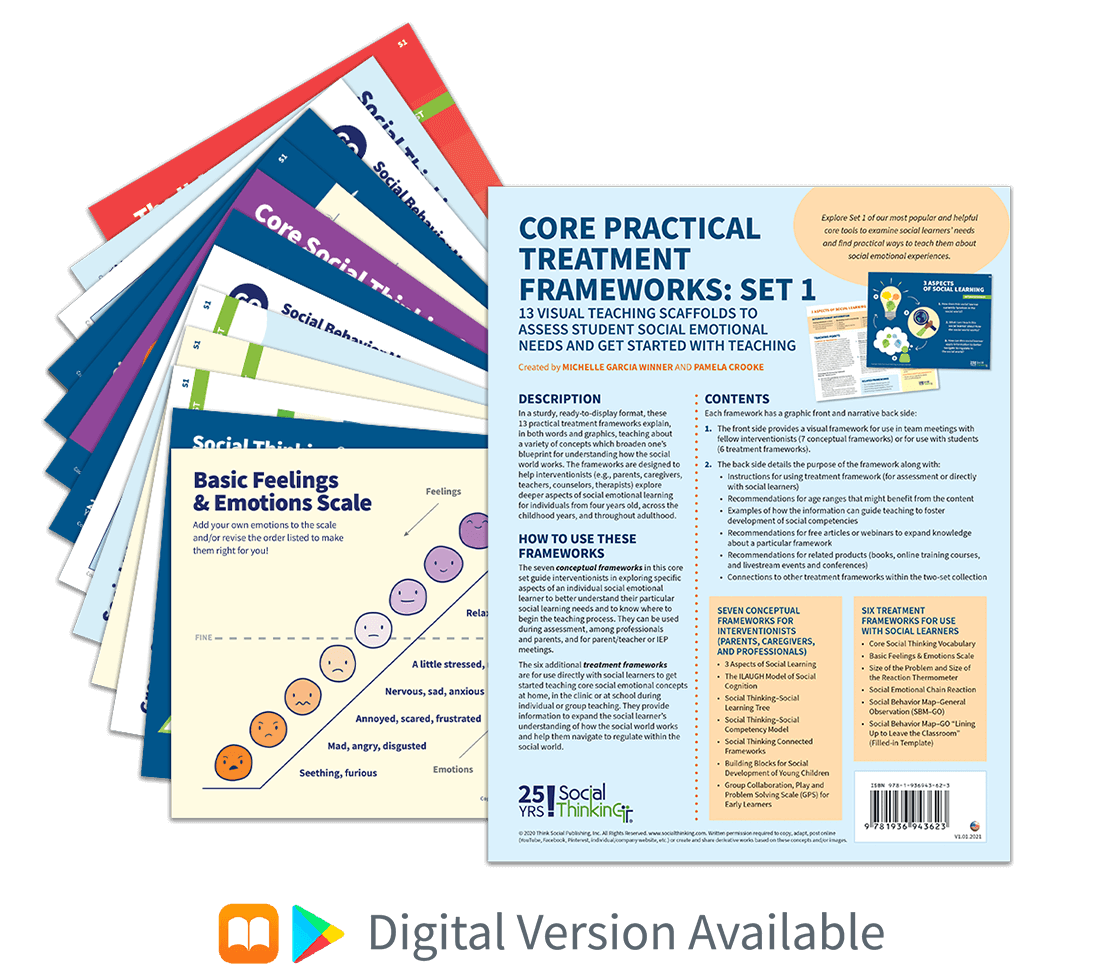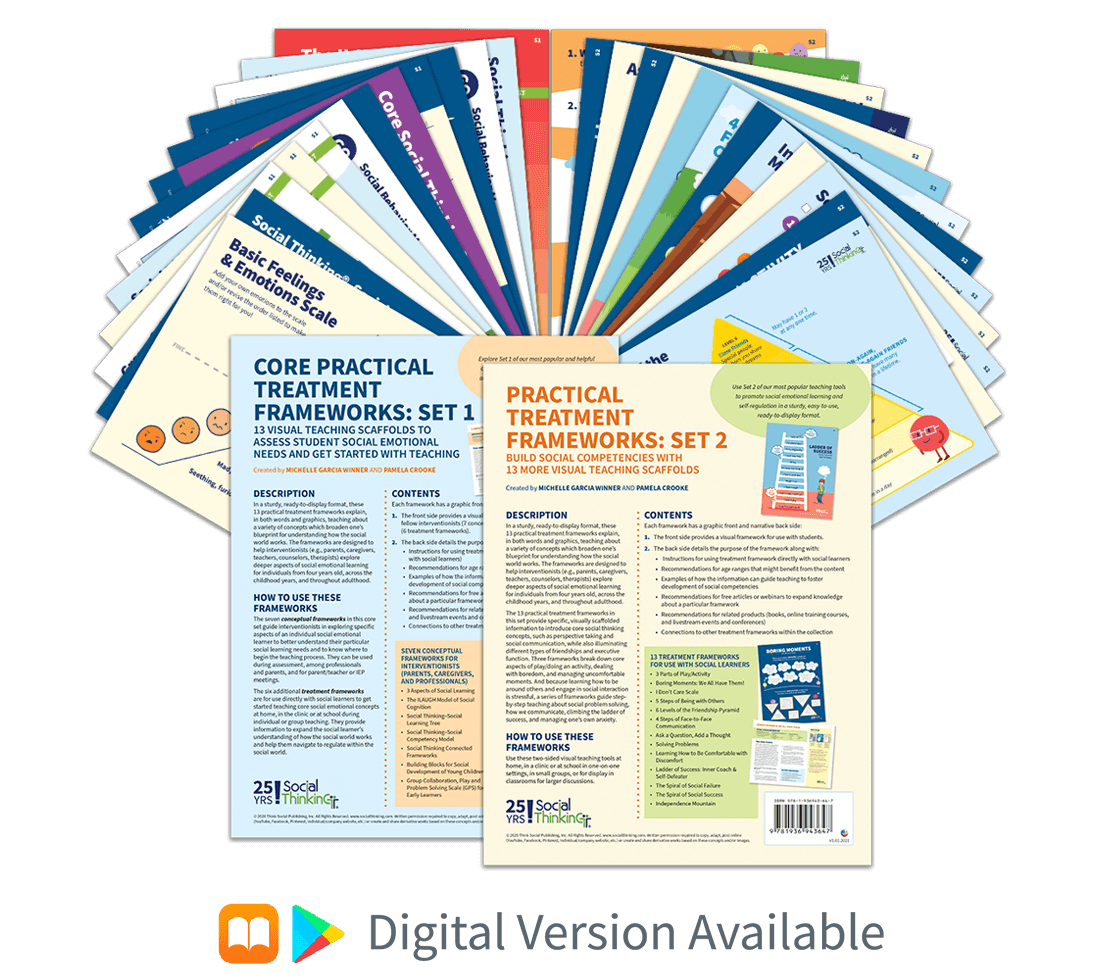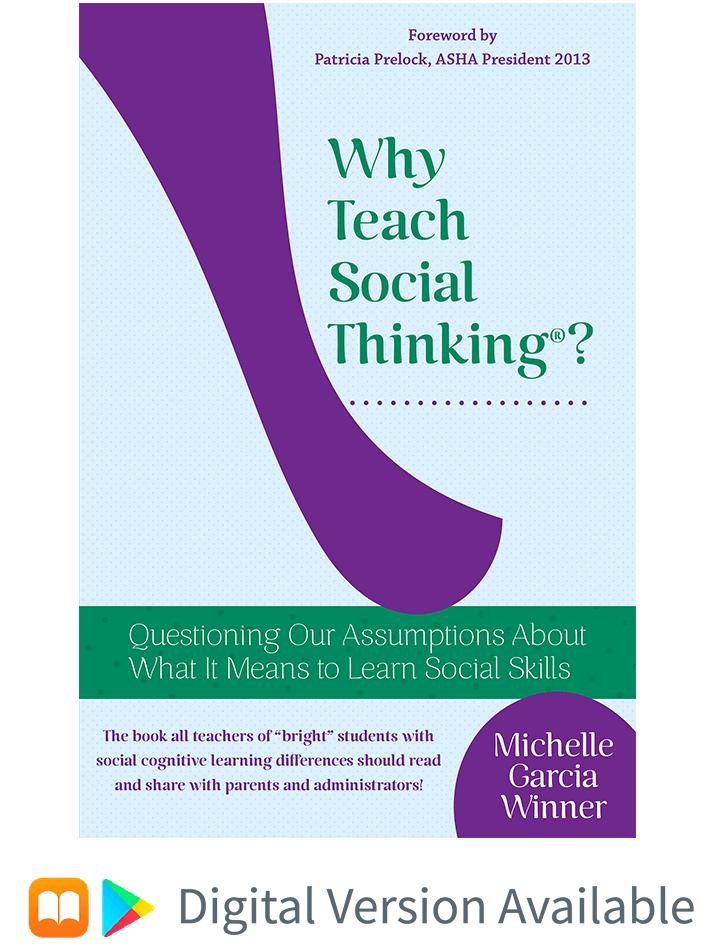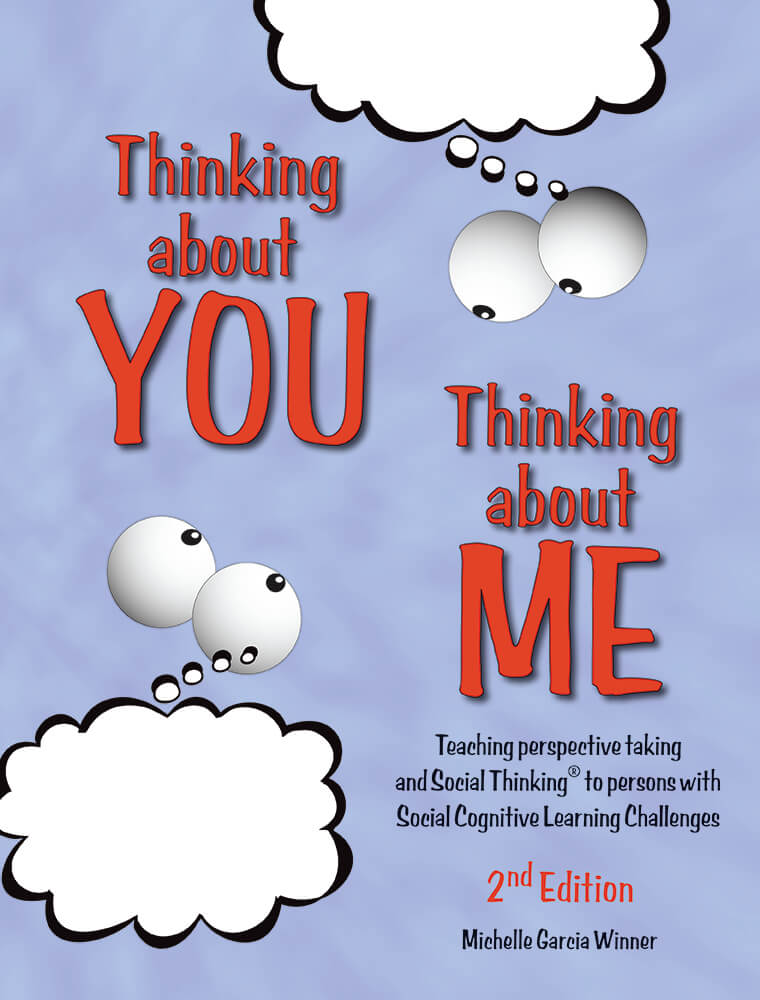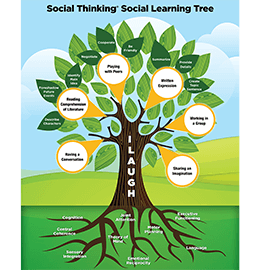Updated: August, 2022
© 2022 Think Social Publishing, Inc.
The ILAUGH Model of Social Thinking is a core (and critical) framework created to help professionals and parents understand and think about the struggles faced by those with social learning differences and/or challenges. The Framework is based on an extensive literature base of both seminal and current research and represents the foundation of all Social Thinking concepts. ILAUGH is an acronym for the evidence-based and evidence-aligned concepts that contribute to challenges across academic, community, vocational, and social contexts. The sections of the ILAUGH are not only grounded in the literature, but also represent a rich clinical base.
Although the ILAUGH Model is divided into six key areas, there is commonly an overlap between and within each of the sections.
I = Initiation of Language to Ask for Help:
Initiation of communication is the ability to use one’s language skills (verbal and nonverbal) to start (or initiate) something that is not routine. This can be in the form of difficulty asking for help, seeking clarification, executing a new task, and entering and exiting a peer group. An individual's ability to talk about his or her own topics of interest can be in sharp contrast to how that person communicates when in need of support or clarification. Yet, these two skills – asking for help and understanding how to join a group for functional or personal interaction - are paramount for future success in the workplace, academic endeavors, relationships, and overall well-being.
L = Listening With Eyes and Brain:
From a social cognitive perspective, listening is more than just receiving auditory information. It routinely requires the integration of visual information with auditory information within the context in order to understand the full meaning of the message being conveyed, or at least make an educated guess about what is being said when the message cannot be interpreted literally. Classrooms depend heavily on having all students attend nonverbally to the expectations in the classroom.
Many individuals neurodivergent individuals have strong technical visual processing strengths, but may struggle to comprehend information presented via the dual challenges of social visual information (reading nonverbal cues) and auditory processing.
A = Abstract and Inferential Thinking
Most of the language we use is not intended for literal interpretation. Our communication is peppered with idioms, metaphors, sarcasm and inferences. Societies around the world bestow awards to writers, and even comedians, who are the most creative with language. Each generation of teenagers and young adults leave a trail of new slang for consumption - most of which is abstract.
Abstract language has also crept into the social media markets. Our commercials, web banners, print flyers and video clips are full of abstract information that require all of us to interpret and infer the meaning. Do people really mean what they say in advertising? How do we know a good deal from a sham? It's incredibly complicated and yet most of us can easily understand the underlying meaning. And it is a mistake to assume that individuals with strengths in factual knowledge, but underlying social thinking challenges, understand the non-literal use of language so prevalent in our society. In fact, many don’t!
Active interpretation of the motives and intentions of others emerges in the first year of life and expands in complexity thereafter. Children learn that mom’s tone of voice speaks volumes and that attention to only her words can miss much of her message. As children grow developmentally, they understand that message interpretation depends heavily on one’s ability to “make a smart guess” based on past experiences, what they know (or don’t know) about the current person and situation, and the communication clues available. Language users assume their communicative partners are trying to figure out their messages. By third grade, neurotypical students understand that we are to infer meaning rather than expect it to be coded literally.
Individuals who struggle to interpret the abstract/inferential meaning of language also routinely struggle with academic tasks such as reading comprehension of literature (e.g., interpreting a character’s thoughts, actions and motives based on the context of the story) and written expression.
U = Understanding Perspective:
Interpreting others’ perspectives or beliefs, thoughts and feelings across contexts is critical to social learning. It is central to group participation in the social, academic or vocational world. Individuals with social learning differences and/or challenges are often highly aware of their own perspective, but may struggle to see another’s point of view.
To understand the differing perspectives of others requires that one’s Theory of Mind (perspective taking) work quickly and efficiently. Most neurotypically developing students acquire a solid foundation in ToM between the ages of 4 to 6 years old. Perspective taking is not one thing, it represents many things happening all at once meaning it is a synergistic and dynamic process.
Perspective taking is key to participation in any type of group (social or academic). It is also a critical component when interpreting information that requires understanding of other’s minds, such as reading comprehension, history, social studies, etc.
G = Getting the Big Picture (Gestalt Processing):
Conceptual processing is a key component to successful social and academic functioning. It is critical to be able to be a part of and follow the group plan or share an imagination. A great deal of information is conveyed through concepts and not just facts, so it’s important that one is able to tie individual pieces of information into the greater concept. For example, when engaged in a conversation, the participants should be able to intuitively determine the underlying concept(s) being discussed, as well as identify the specific details that are shared. Similarly, when reading, one has to follow the overall meaning rather than just collect a series of seemingly unrelated facts.
As with many elements of social cognition, “getting the big picture” relies heavily on executive functions. As a result, difficulty with organizational strategies often stems from problems with conceptual processing. Struggles in this area can greatly impact one’s ability to formulate written expression, summarize reading passages, and manage one’s homework load, as well as derive the intended meaning from a social conversation.
H = Humor and Human Relatedness:
Human relatedness is at the heart of social interaction. Most of us desire to belong or build relationships.
Having a good sense of humor is a strength but missing subtle cues to understand how to use humor successfully can quickly turn that strength into a problem. It is important for educators/parents to work compassionately with humor to help minimize the anxiety the individual may experience.









